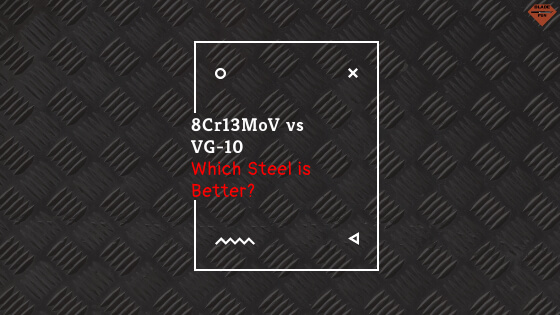For their prices, 8Cr13MoV and VG-10 are both great steels. But, of course, there are differences between the two. Which one’s better?
Here’s the short version:
VG-10 is a better steel than 8Cr13MoV. It’s got better corrosion resistance, edge retention, and toughness. However, 8Cr13MoV is cheaper and easier to sharpen. So, for a higher quality steel, go with VG-10. For a cheap knife that’s easier to sharpen, go with 8Cr13MoV.
While VG-10 is better, there are some scenarios in which it would be better to use 8Cr13MoV. What are those scenarios? Let’s dive a little deeper and find out.
Major Differences
The biggest differences between the two are edge retention and toughness: VG-10 is better in both. While VG-10 is also slightly better in terms of corrosion resistance, unless you’re putting the steels through extremely rigorously corrosive conditions like salt water or a ton of sweat, you’re unlikely to notice much of a difference.
In terms of how easy they are to sharpen, 8Cr13MoV wins that one. Because it’s a softer steel than VG-10, it’s easier to sharpen–but those two are trade-offs. Generally, edge retention and ease of sharpening are inversely related. The longer the edge lasts, the harder it is to sharpen, and vice versa.
Price is also a difference: 8Cr13MoV is a cheaper steel than VG-10.
So, if you want something higher quality that’s tougher, has higher edge retention, and more corrosion resistance, go with VG-10. If you want something that you can beat up without feeling bad about it, go with 8Cr13MoV.
8Cr13MoV
8Cr13MoV is a stainless steel usually made in China. (The “stainless” part means that it’s resistant to rust.)
The seemingly cryptic name of 8Cr13MoV actually refers to the steel’s composition. The 8 refers to the percentage of carbon (0.8%), the Cr13 refers to the percentage of chromium (about 13%), the Mo refers to molybdenum, and the V refers to vanadium.
8Cr13MoV is also in a series of steel, in which you may also see steels like 8Cr14MoV. They all follow the same naming pattern: The first number (8 in this case) denotes the percentage of carbon in the steel (0.8% carbon in this case).
The second number (14 in 8Cr14MoV) is the number denoting the percentage of chromium. In 8Cr14MoV, it means that it has 14% chromium, which means that it’s higher than 8Cr13MoV and has more corrosion resistance.
The Mo still means molybdenum and the V still means vanadium.
The full composition of 8Cr13MoV is about:
- 0.8% carbon
- 13% chromium
- 0.3% molybdenum
- 0.25% vanadium
- 1% silicon
- 1% manganese
All those components each do different things: The carbon increases strength (it’s important to note that at high levels, carbon leads to brittleness, which means easy chipping and breaking), the chromium increases corrosion resistance, the molybdenum increases hardenability (which basically means that it’s easier to harden, and thus manufacture), and vanadium improves wear resistance and strength. Manganese increases strength and hardness. Silicon does too, but to a lesser extent.
8Cr13MoV is the kind of steel you can beat up, chip, break, roll, or just plain lose without feeling too bad–the price point makes it nearly impossible to. If that’s what you’re looking for, then go with 8Cr13MoV.
VG-10
While 8Cr13MoV is a Chinese steel, VG-10 is a Japanese steel. It’s also considered stainless, and is moreso than 8Cr13MoV.
What VG-10 stands for is “V Gold 10.” The “Gold” part refers to the quality of it–its “gold standard.” While it’s not necessarily the best steel out there, it’s still pretty good.
In terms of composition, VG-10 has:
- 1% carbon
- 15.5% chromium
- 1.2% molybdenum
- 0.3% vanadium
- 0.5% manganese
- 1.5% cobalt
You’ll notice that VG-10 has cobalt while 8Cr13MoV doesn’t. Cobalt basically helps improve edge retention and cutting power in the blade through the matrix patterns that the carbides form. It also helps with corrosion resistance.
VG-10 is the more premium of the two knife steels here, so if you want something more premium (meaning more toughness, edge retention, and corrosion resistance), then go with VG-10.
If you’re interested in learning more about knife steels (and knives in general), then we’ve got a bunch more content for you! You can check them out here.

